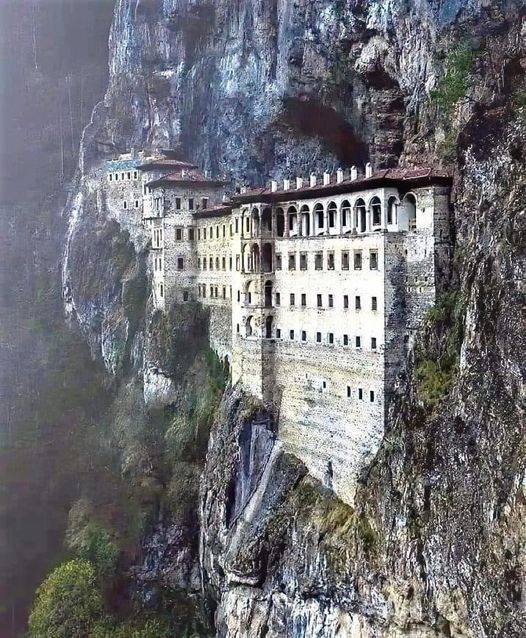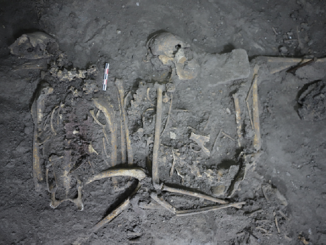Nestled within the lush forests and rugged cliffs of Turkey’s Black Sea Province of Trabzon lies an architectural marvel that defies both gravity and time: the Sumela Monastery. Perched precariously on the steep slopes of the Pontic Mountains, this ancient monastery is a testament to human ingenuity, faith, and resilience. It is not only a place of religious significance but also a stunning example of how architecture can harmonize with nature to create something truly spectacular. Join us as we explore the history, architecture, and cultural significance of the Sumela Monastery, and discover why it continues to captivate visitors from around the world.

The Origins and Historical Significance
The story of the Sumela Monastery begins in the 4th century AD, during the reign of the Byzantine Emperor Theodosius I. According to legend, two Athenian monks, Barnabas and Sophronius, were guided to the site by a miraculous vision of the Virgin Mary. Upon discovering a cave in the cliff face, they decided to establish a monastic community dedicated to the Mother of God. Over the centuries, the monastery grew in both size and importance, becoming a major center of Orthodox Christian worship and learning.
Throughout its history, Sumela has faced numerous challenges, including invasions, earthquakes, and political upheavals. Despite these obstacles, it has managed to survive and even thrive, thanks in part to the support of various Byzantine and Ottoman rulers. The monastery’s resilience is a testament to the enduring power of faith and the determination of those who have dedicated their lives to preserving its legacy.
Architectural Marvels and Natural Harmony
What sets the Sumela Monastery apart from other religious sites is its breathtaking architecture, which seamlessly blends with the natural surroundings. The monastery is built into a sheer cliff face, 1,200 meters above sea level, overlooking the Altındere Valley. This location not only provided the monks with a sense of seclusion and security but also offered them stunning views of the surrounding landscape.
The architectural design of the Sumela Monastery is both functional and aesthetically pleasing. The complex includes a main church, several chapels, a kitchen, student rooms, a guesthouse, a library, and a sacred spring revered for its purported healing properties. The main church, dedicated to the Virgin Mary, is adorned with vibrant frescoes depicting scenes from the Bible and the lives of saints. These frescoes, which date back to the 14th century, are considered some of the finest examples of Byzantine art in the region.
One of the most striking features of the Sumela Monastery is its series of terraced buildings that cascade down the cliffside, creating a visual spectacle that seems to defy gravity. The construction of these terraces required incredible engineering skills and a deep understanding of the local geology. The use of local materials, such as stone and timber, further enhances the monastery’s harmony with its natural surroundings.
A Sanctuary of Spirituality and Culture
Beyond its architectural splendor, the Sumela Monastery has long been a sanctuary of spirituality and culture. For centuries, it has attracted pilgrims from far and wide, drawn by the monastery’s reputation as a place of miracles and divine intervention. The icon of the Virgin Mary, believed to have been painted by St. Luke the Evangelist, is one of the most venerated relics housed within the monastery. Pilgrims come to pray before the icon, seeking blessings, healing, and solace.
The monastery also played a crucial role in preserving and disseminating knowledge during the Byzantine and Ottoman periods. Its library was once home to a vast collection of manuscripts, including religious texts, scientific treatises, and works of literature. Although many of these manuscripts have been lost or relocated over the centuries, the monastery remains a symbol of the rich cultural heritage of the region.
In recent years, efforts have been made to restore and preserve the Sumela Monastery, ensuring that future generations can continue to appreciate its beauty and significance. Restoration projects have focused on stabilizing the cliffside, repairing damaged frescoes, and improving access for visitors. These efforts have been supported by both the Turkish government and international organizations, reflecting the monastery’s global importance.
Visiting the Sumela Monastery: A Journey of Discovery
A visit to the Sumela Monastery is not just a journey to a historic site; it is an adventure that engages all the senses. The journey begins with a scenic drive through the Altındere National Park, where visitors are treated to views of dense forests, cascading waterfalls, and rugged mountain peaks. As you approach the monastery, the sight of its white walls clinging to the cliffside is both awe-inspiring and humbling.
Upon arrival, visitors can explore the various buildings and spaces that make up the monastery complex. The main church, with its richly decorated interior, is the centerpiece of the site. The frescoes, with their vibrant colors and intricate details, offer a glimpse into the spiritual and artistic traditions of the Byzantine era. Walking through the narrow corridors and staircases, you can imagine the lives of the monks who once inhabited this remote sanctuary.
For those interested in photography, the Sumela Monastery provides endless opportunities to capture stunning images. The contrast between the man-made structures and the natural environment creates a visual harmony that is truly unique. Be sure to bring your camera and take advantage of the various viewpoints around the site to capture the full majesty of this architectural wonder.


